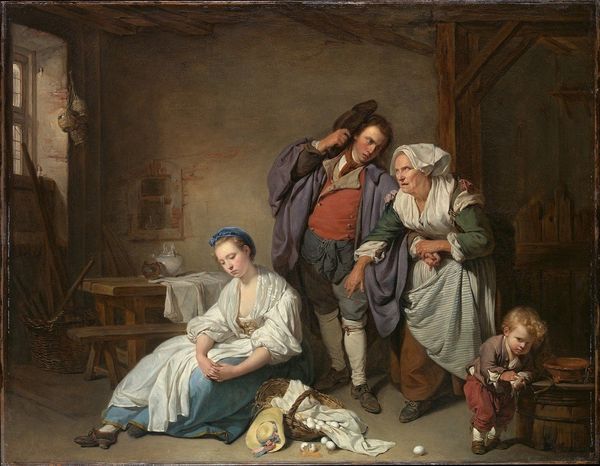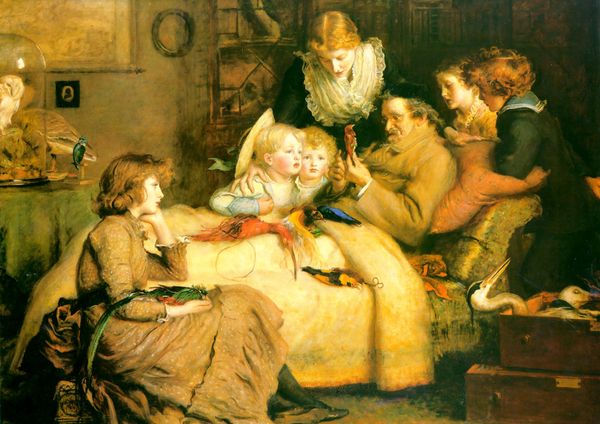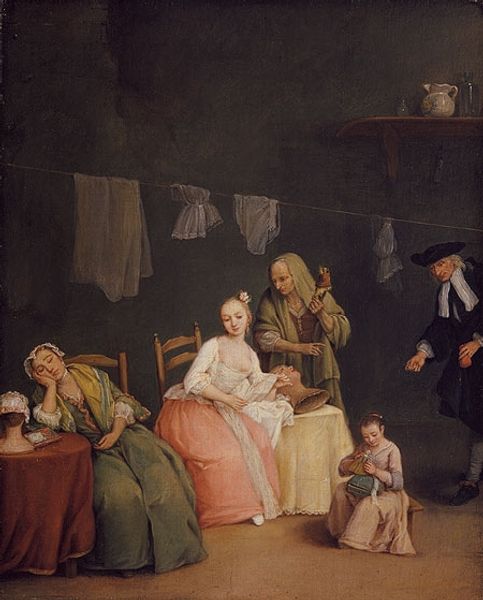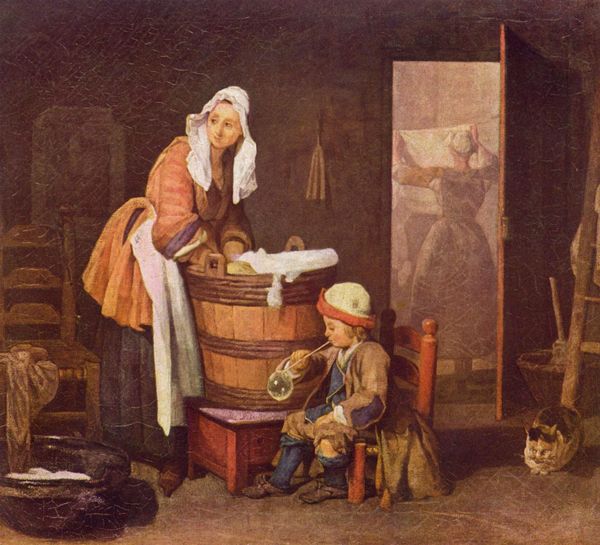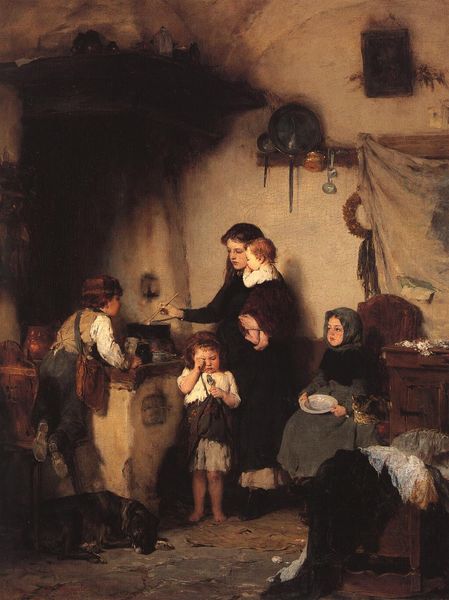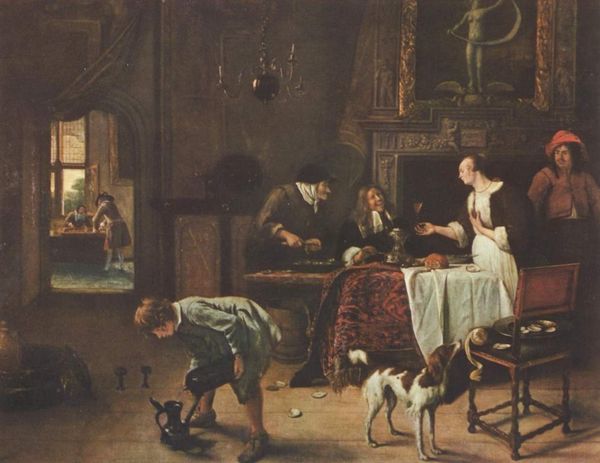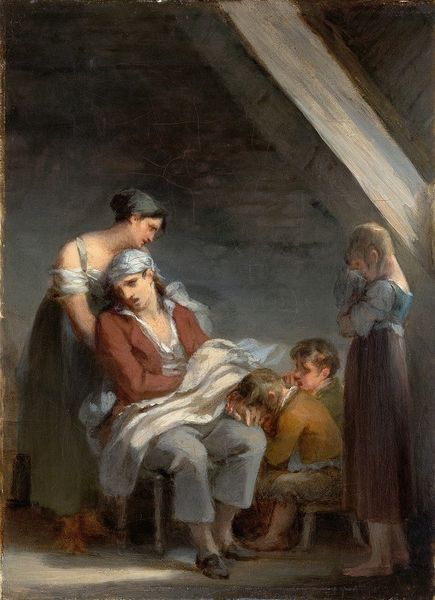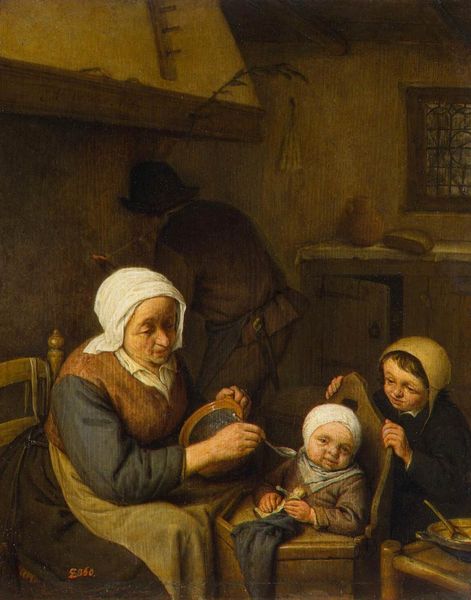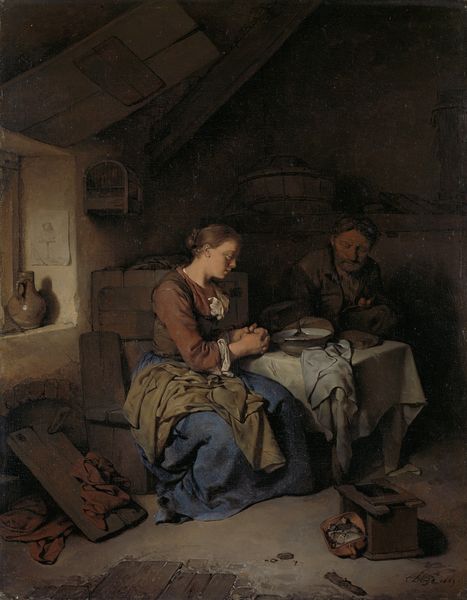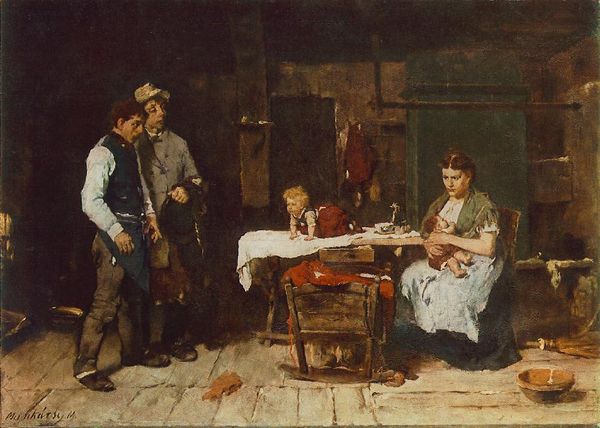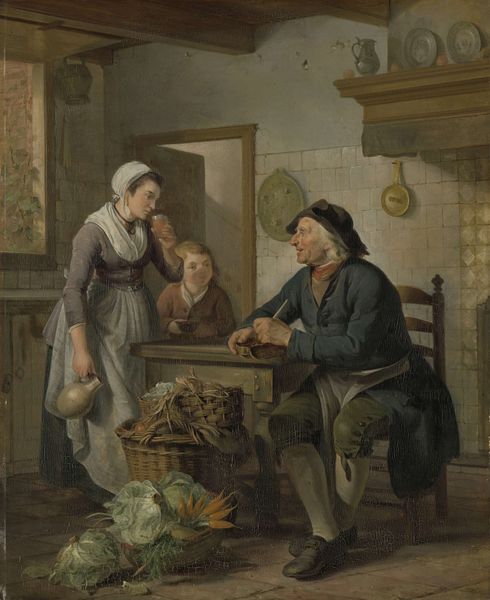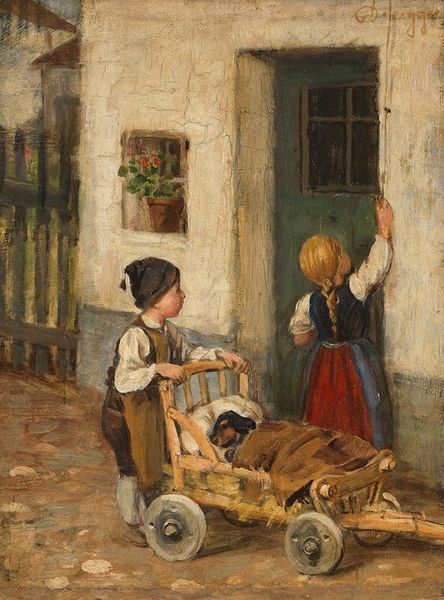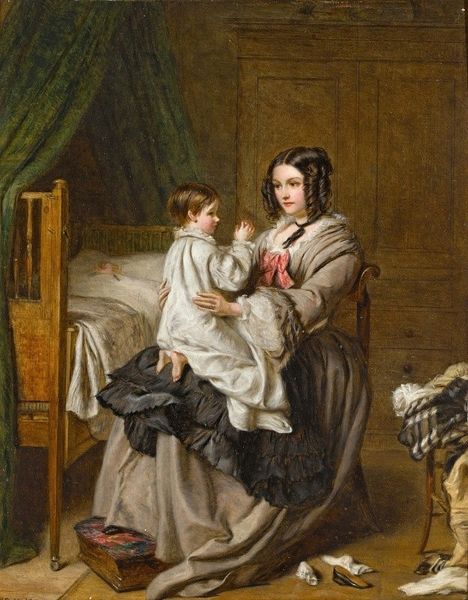
painting, oil-paint
#
portrait
#
narrative-art
#
painting
#
oil-paint
#
figuration
#
oil painting
#
child
#
genre-painting
#
rococo
Copyright: Public domain
Curator: Jean-Baptiste Greuze’s “The Spoiled Child,” painted in 1765, currently resides in the Hermitage Museum. Oil paint on canvas, this piece captures a fleeting moment of domestic unease. Editor: My first thought? A visual cacophony of soft neglect. The composition feels cramped, the colors muted, amplifying this heavy air of discontent like a poorly tuned harpsichord. Curator: Interesting. The compressed space definitely contributes to the narrative. Notice the interplay between vertical elements – the towering wardrobe, the precarious birdcage – and the horizontal slump of the mother and child. These create visual tensions. Editor: Exactly! That slump is key. It speaks of resignation. Her gaze is averted; his is petulant. The tilted plate of food feels almost like another character adding to the overall imbalance, poised to spill over at any second. It’s pure tragicomedy. Curator: Absolutely. And the detail—the discarded sewing, the scattered food scraps—functions as a visual index of moral decay, signifying excess and lack of discipline within a wealthy family. Greuze, with this snapshot of genre painting, offers a sharp commentary on societal values, doesn't he? Editor: He does. I find the whole thing quite funny though—like an overdramatic stage production—but perhaps the moral lesson felt more resonant back then. Now, it’s sort of a charming peepshow into aristocratic angst. But isn’t it all a bit staged? Curator: Perhaps! The figures are carefully arranged, their gestures calculated. One could argue that it lacks genuine emotional depth, yet the artful arrangement is what renders the subject so legible, so poignant. The viewer can follow the gaze, the actions...It works formally, whatever one might feel personally. Editor: True, true. Even that pathetic-looking dog chomping the spoon pulls on the right heartstrings, but, for me, it's more the carefully placed lighting on the faces and the texture of the fabrics. It invites a voyeuristic gaze, as you say, which I, like many people, probably can't resist! Curator: Indeed. Well, contemplating the compositional structure along with these figures certainly provides plenty of material to consider regarding artistic choices, especially within its historical moment. Editor: Agreed! It reminds me that the most fascinating dramas often play out not on grand stages but within the quiet chaos of our own domestic interiors, especially for parents, perhaps.
Comments
No comments
Be the first to comment and join the conversation on the ultimate creative platform.
